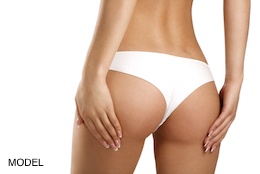Common Faqs About Fat Grafting
Fat grafting, also known as fat transfer or lipoinjection, is a procedure in which your own fat cells are  injected into other parts of your body to enhance your overall shape and appearance. Since the fat from your own body is used in the procedure, fat grafting often produces results that are far softer and natural-looking than other types of implantation or dermal filler methods. Every year, thousands of people who undergo fat grafting are pleased with the end result.
injected into other parts of your body to enhance your overall shape and appearance. Since the fat from your own body is used in the procedure, fat grafting often produces results that are far softer and natural-looking than other types of implantation or dermal filler methods. Every year, thousands of people who undergo fat grafting are pleased with the end result.
Since fat transfer is continuing to rise in popularity year after year, it’s understandable that you might want to learn more about the procedure. Here is a list of common FAQs about the topic of fat transfer.
1. How is fat grafting performed?
First, your cosmetic surgeon collects, or harvests fat cells from your body, then processes them for re-injection.. Next, your surgeon injects the fat cells back into your body into the area you’ve selected for treatment. In some cases, you may have to visit your surgeon multiple times until you achieve the results you desire.
2. How long do results from fat grafting last?
Like most cosmetic treatments, fat grafting is not permanent, but can last for up to several years or longer depending on how well your body responds to the transferring of fat. In some cases, your body tissue will reabsorb fat cells, and multiple treatments will be needed. Your cosmetic surgeon will be able to provide you with an estimated timeframe in regards to how long fat grafting will last based on your type of treatment.
3. Where are my fat cells collected from?
Your cosmetic surgeon will collect fat cells from regions of your body in which the volume of fat is extremely dense, which are usually your thigh and buttock regions. In most cases, your surgeon won’t require the amount of fat cells needed to change the appearance of fat in the area from which it’s being removed.
4. How are fat cells placed in my face or buttocks?
After your fat cells have been processed for injection, your cosmetic surgeon will place your cells in a series of small syringes, and inject them into the desired regions of your face through access points if you’re undergoing facial fat transfer. The access points in your skin will then heal without the need for stitches, and will be covered with bandages to promote healthy healing. The process is the same for those who undergo buttocks fat transfer, in which fat cells are injected into access points on your buttocks and covered with bandages for the duration of healing.
5. Which body parts respond the best to fat grafting?
Most areas of your face and body will respond well to fat grafting, with the exception of lips and laugh lines. Though lips and laugh lines are treatable, you may be required to undergo at least three fat grafting sessions before results become noticeable.
6. How and why is fat grafting so effective?
Fat cells are often extremely fragile and delicate in nature, and are only loosely connected to their blood supply. When fat cells are reinjected into your body, they are likely to survive and thrive due to the fact that new blood supply will be able to grow back into those cells.
7. How much fat is needed for fat transfer?
The amount of fat needed for your fat transfer procedure will depend largely in part on the area of your body being treated, and on the amount of fat you currently have on your body. If you have a lot of body fat, it may be easier for your surgeon to collect and remove fat cells for grafting. On the other hand, if your body is lacking in fat, your surgeon may suggest taking steps to gain weight to make the procedure possible.
8. How many of my fat cells will survive?
After your cosmetic surgeon removes and harvests your fat cells, only a certain percentage will survive. In most cases, your surgeon will remove enough fat cells needed to make up for those that don’t survive, and it’s unlikely that your surgeon will need to remove more of your fat cells again before surgery.
9. How long does the fat grafting procedure take?
Fat transfer can take anywhere from one to five hours, depending on the areas of your body in which fat is being harvested and grafted. If you’re having fat transferred to your face, the procedure may only take an hour; but if you’re having fat transferred to your buttocks with the help of liposuction, the procedure may take between four and five hours.
10. How long is recovery from fat transfer?
Recovery from fat transfer can take anywhere from two days to two weeks, depending on the nature of your procedure and on the area being treated. Face grafting results in less downtime than buttocks fat transfer -- the latter of which may prevent you from being able to sit down on your buttocks for prolonged periods for up to two weeks.
11. How do I prepare for fat transfer?
During your initial consultation, your cosmetic surgeon will provide you with a list of instructions to follow in the days and weeks before surgery. If you’re a smoker, it’s important that you stop smoking at least six weeks before fat grafting to lower your risk for complications and to promote faster healing and less scarring. You will also be advised to stop taking aspirin and other medications that increase bleeding, and to make transportation arrangements to and from the office on the day of surgery.
Do you want to enhance certain parts of your body through fat grafting? GLOW Surgical Arts offers breast fat transfer, buttocks fat transfer, and facial fat transfer. Sign up for a free consultation or call GLOW Surgical Arts at (650) 241-2209 to learn more about our services. You can also click here to download our free ebook entitled, The Patient’s Guide to a Brazilian Butt Lift.



